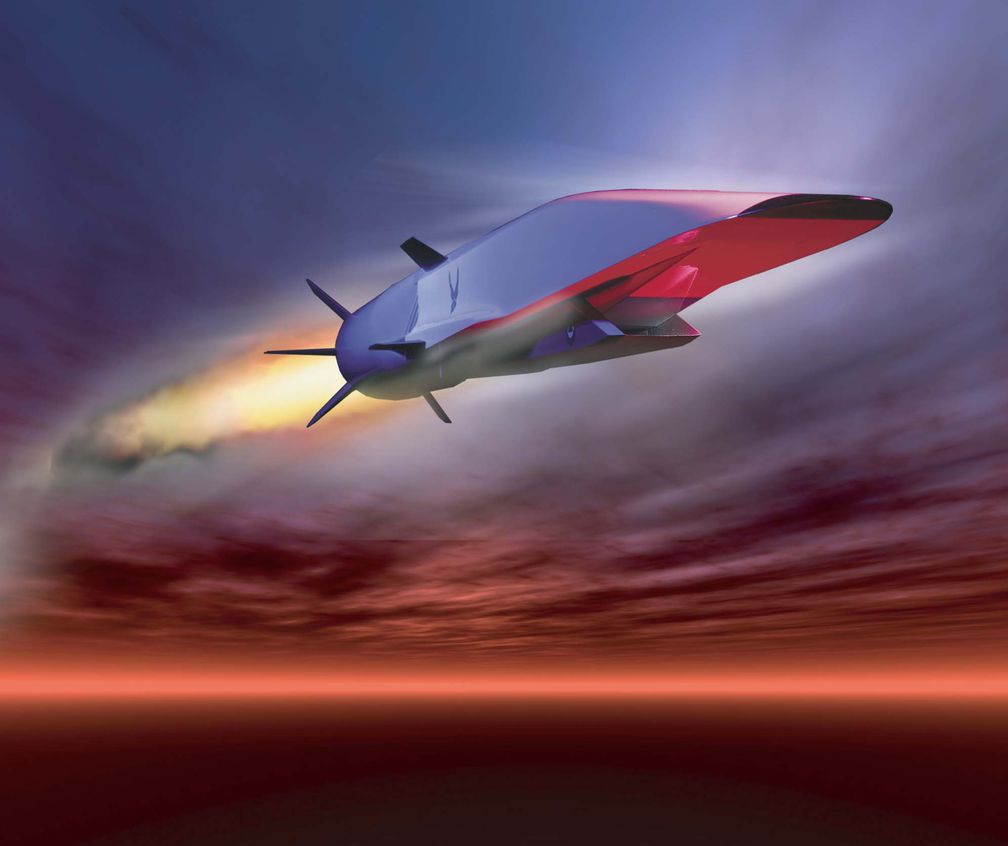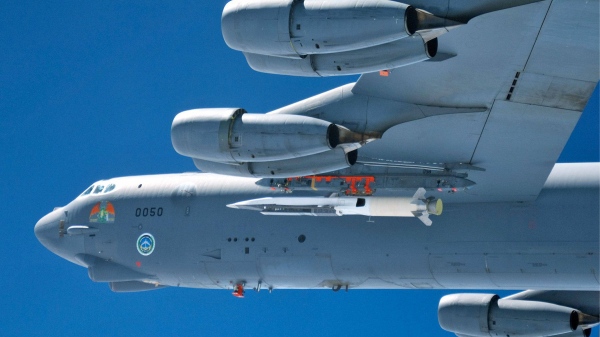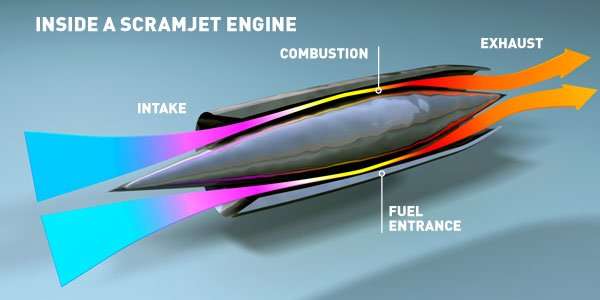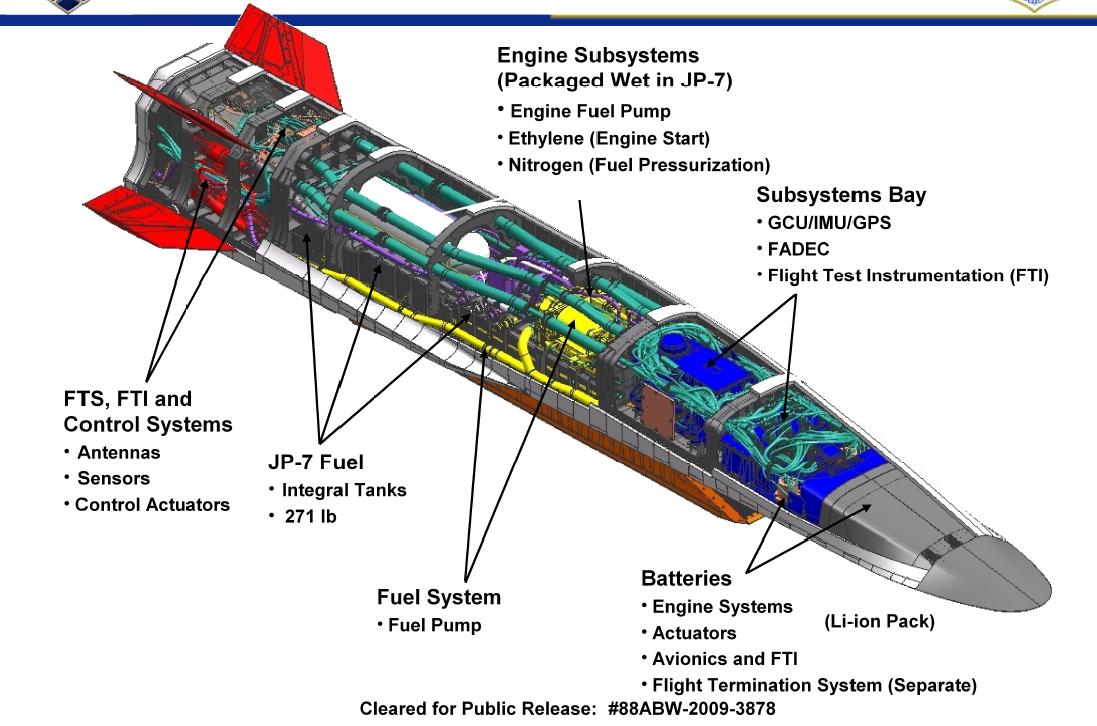


This February Zachary Keck, a well-known expert and Associate Editor of The Diplomat and a columnist for The National Interest,published a brilliant piece saying the US Navy is exploring the feasibility of sub-launched hypersonic missiles for conventional prompt global strike program (CPGS).
He refers to an Inside Defense report which says the Navy’s Strategic Systems Programs office is soliciting proposals for «two-year industry trade studies to flesh out technology options and architecture for an intermediate-range conventional prompt global strike weapon».
The report said that the competition was part of the Defense Department’s «fiscal year 2014 plan to investigate a launcher, missile and glide body for a weapon with potential game-changing capabilities». The office is announcing competition and is ready to award contracts, «to evaluate technology options and compare the performance and technology cost considerations of these options».
Over a decade ago, in its effort to maintain military superiority and a powerful deterrent, the United States identified the need for a new capability. This led the U.S. military to create the controversial concept of a high precision global strike capability.
The program is currently in the research and development phase and mainly boils down to the development of long‐range high‐precision conventional weapons capable of reaching a target anywhere in the world within one hour. The Obama administration has indicated that it intends to make an acquisition decision till the end of the term.
The Prompt Global Strike (PGS) program encompasses numerous technologies. The potential components are conventional intercontinental ballistic missiles equipped with high-precision, non-nuclear warheads, strategic cruise missiles with hypersonic speeds or an air-launched hypersonic cruise missile, such as the Boeing X-51 or Advanced Hypersonic Weapona and kinetic weapons which are yet to be implemented in practice.
The Air Force and DARPA are developing a hypersonic glide delivery vehicle that could deploy on a modified Peacekeeper land-based ballistic missile—a system known as the Conventional Strike Missile (CSM). Congress may review other weapons options for the PGS mission. These include not only ballistic missiles and boost-glide systems, but also bombers, cruise missiles, and possibly scramjets or other advanced technologies.
In addition, once the Obama administration has committed to a competitive acquisition process, industry may also submit additional ideas. The US aims to combine PGS with its space and anti-missile technologies to form an integrated defense system, which could render other countries’ strategic weapons, including nuclear arms, almost useless.
There are some tangible achievements on the way. On May 1, 2013 an experimental unmanned aircraft developed for the US Air Force has flown at more than five times the speed of sound in a test off California. The test marked the fourth and final flight of an X-51A by the Air Force – a breakthrough in scramjet technology. The aircraft achieved the velocity of Mach 5.1 (4828 kmh) at 60,000 feet (18,288 meters) making it hypersonic. It traveled 230 miles in little over six minutes. The vehicle plunge into the ocean as planned.






The X-51A aircraft is known as the Wave Rider because it stays airborne, in part, with lift generated by the shock waves of its own flight. After being dropped from a B-52 bomber, a solid-rocket booster is used in the initial phase of the plane’s flight to accelerate it up to the speed which allows the engine to take over by drawing in air through the craft’s forward momentum. Achieving a successful scramjet flight is very technically challenging because of the high speeds and temperatures generated.
The Wave Rider is designed to reach speeds of Mach 6 or above, six times the speed of sound and fast enough to cross the Atlantic Ocean and strike a target in Europe in less than an hour. The US Air Force will continue hypersonic research and the successes of the X-51A will make a contribution into the High Speed Strike Weapon program currently in its formation phase.
X-51 is in no way a competitor for a conventional Trident. It will have a range of only 600 nautical miles. And it first needs to be lifted into the air by a plane, and then accelerated by a rocket-fueled booster before its hypersonic engine kicks in. But it is the first weapon other than a ballistic missile to fly at hypersonic speeds.
In his recent book Silver Bullet? Asking The Right Questions about Prompt Global Strike James Acton, Senior Associate in the Nuclear Policy Program at the Carnegie Endowment for International Peace argues for a wider debate over the merits and demerits of the system.
There are several destabilizing factors inherent to the program, such as its reliance on the development of long-range missiles with conventional explosives in the place of nuclear warheads, which could easily lead a state to mistake a CPGS weapon for a nuclear warhead, the potential ambiguity carried with it poses a considerable threat to strategic stability.
There is another aspect of the problem. Long-distance launching vehicles for precision-guided conventional warheads and non-nuclear boost-glide weapons are not covered by any agreements. The issue is not included into the security and arms control agenda. It may spark a new arms race. Other countries have no way out but to meet the challenge they face and they do. The concerns are very real, the above mentioned facts prove that the efforts are already in progress. There may be profound implications for international security if the issue is not addressed in time.
Discussions within the United States about using CPGS weapons to attack hard and deeply buried targets inevitably raise concerns in Russia about the survivability of silo‐based intercontinental ballistic missiles. Russian officials have expressed their sharp criticism towards the U.S. plans for the PGS initiative.
On June 19, 2013 – just hours before President Barack Obama called for further nuclear reductions in Berlin – President Vladimir Putin issued a preemptive rebuttal, stating that, «we see that work is active around the world on developing high‐precision conventional weapons systems that in their strike capabilities come close to strategic nuclear weapons. Countries that have such weapons substantially increase their offensive capability».
Following the meeting of the Russian Ministry of Defense collegium in Moscow on December 10, 2013, the Defense Minister, Army- General (five stars) Sergei Shoigu, and the chief of the General Staff, Army-General Valery Gerasimov, instructed the top brass on the priorities facing the military. Top commanders were told that the development of Prompt Global Strike one of the major threats the defense plan is linked to.
A plan is being drafted to deploy rail-mounted nuclear missiles as a potential response to Prompt Global Strike. On December 18, 2013, Lieutenant-General (two stars) Sergei Karakaev said, «A defense ministry report has been submitted to the president and the order has been given to develop a preliminary design of a rail-mounted missile system». Karakaev added that extensive analysis of the US system led to the conclusion that «there is a need to reconsider the issue of a rail-mounted missile system given its increased survivability and the extent of our railway network».




«If we are talking about existing ballistic carriers with conventional equipment, it is clearly the path to the escalation of the conflict with the hardest, in fact, apocalyptic consequences», said Deputy Foreign Minister Sergei Ryabkov.
Russian Deputy Prime Minister Dmitry Rogozin said last December that Moscow reserves the right to use nuclear weapons in response to a conventional strike and sees them as a «great equalizer» reducing the likelihood of aggression… Rogozin said that those who «experiment with non-nuclear strategic weapons» should remember that «if we come under attack, we will undoubtedly use nuclear weapons in certain situations to defend our territory and state interests».
The leaders of US and Russia know how to be wise and insightful. That’s how the 1972 ABM and INCSEA, SORT and START treaties were signed and anti-satellite experiments were put on the shelf. Isn’t it time to revive a bit of the past? Other states like China could be included into the arms control process making it a much better alternative to an uncontrolled arms race.
Andrei AKULOV | Strategic Culture Foundation
http://www.strategic-culture.org/news/2014/02/13/prompt-global-strike-another-stride-ambitious-incarnation.html
